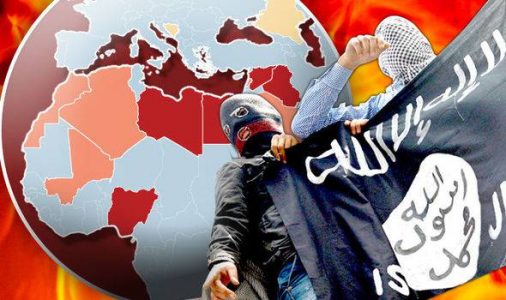
The Islamic State remains an undefeated threat
Pentagon and the United Nations both estimate that the group still has as many as 30,000 active insurgents in the region. Thousands more IS-aligned fighters are spread across Africa and Asia, from the scrublands of Mali and Niger to the deserts of Iraq and mountains of Afghanistan, to the island jungles of the Philippines.
I keep track of the loose alliance of various global affiliates and insurgent groups collectively known as the Islamic State. It’s part of my research chronicling America’s wars in remote lands where I have worked for the CIA and the U.S. Army. I also monitor Islamic State activities around the world for a University of Massachusetts-Dartmouth project I lead called MappingISIS.com
In recent months, the Islamic State group has reconstituted itself in the Syria-Iraq region and continues to inspire mayhem across the globe.
The “Dawla Islamia,” or Islamic State, began as a Sunni Muslim insurgent group in Iraq amid the maelstrom of sectarian violence that followed the U.S.-led 2003 invasion. Up until then, Saddam Hussein’s ruling Baathist party had suppressed Islamist jihadi groups of all stripes, limiting influence in Iraq from Shiite-dominated Iran and Sunni-fundamentalist Saudi Arabia.
In 2014 IS blitzed across the region and took over a wide swath of Iraq and Syria, where it functioned as a de facto government. It also maintained a ferocious fighting force, always seeking to expand the reach of its so-called “caliphate” fundamentalist Islamic regime.
Since major defeats in 2017, the Islamic State group has retreated to a largely inaccessible sanctuary in the remote Qara Chok, Hamrin and Makhmoul mountains of northeastern Iraq. From there, they regularly attack U.S. and Iraqi troops, Kurdish forces and local Shiite militias. They also attract new Sunni recruits, resentful of discrimination and repression from the currently Shiite-dominated Iraqi government.
The group’s terror campaigns include dressing up as government troops at fake checkpoints and executing “traitors,” killing pro-government tribal and village elders and executing government employees in night raids on their homes.
In the summer of 2019, IS fighters in northern Iraq also burned hundreds of acres of crops belonging to suspected pro-government villagers whom they labeled “infidels.”
Most recently, IS fighters have been heartened by the U.S. drone strike that killed Iranian Maj. Gen. Qassem Soleimani, who had led Iraqi Shiite militias against them. Soleimani’s death, which Islamic State leaders hailed as “divine intervention,” led to a halt in joint U.S.-Iraqi operations against the Islamic State. Iraq’s parliament and prime minister have called for all U.S. troops to leave Iraq, which would provide opportunity for IS forces to expand their operations.
Source: National Interest





